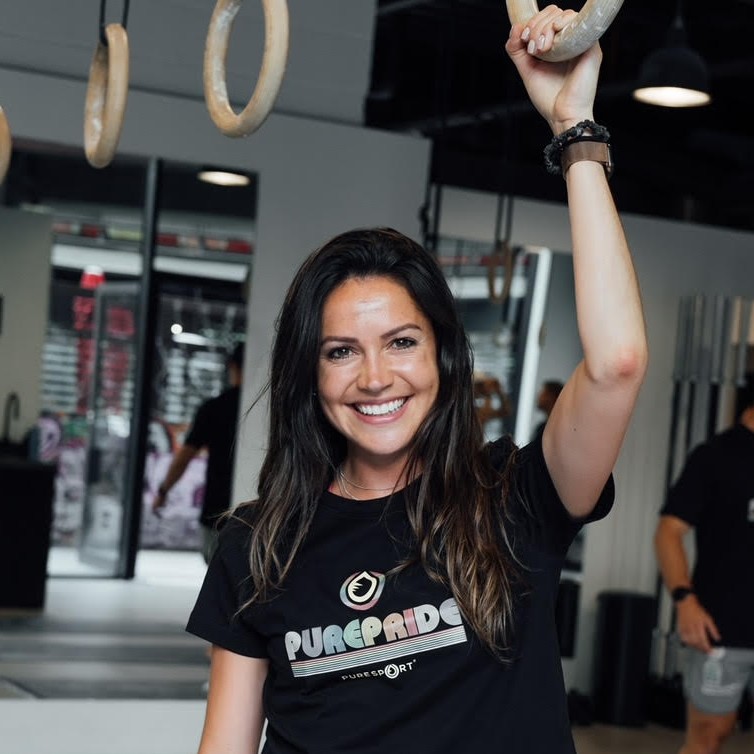Do You Need A Cholesterol Test?
Expert advice on how to check your levels

Cholesterol has become a bad word, and for good reason. But while too much cholesterol can have serious health implications, a certain level of it is in fact crucial for good health. The fatty substance primarily made in the liver is found in every cell in our body. It helps to make bile, which plays a part in fat digestion, plus it contributes to the health of muscles, teeth and bones.
However, according to the charity Heart UK, more than half of UK adults actually have raised cholesterol, which can lead to problems such as heart disease.
Corrine Toyn, a dietitian and healthcare professional relations manager at Benecol, explains that two of the most common causes of high cholesterol are “eating too much saturated fat and lack of exercise”. However, high cholesterol can also be hereditary.
So how do you know if your cholesterol is at a healthy level?
“There are no visible symptoms of high cholesterol,” says Toyn. “Taking a test is the only way to know whether your cholesterol is too high or not.”
“High cholesterol can affect anyone, so it’s really important to take a cholesterol test sooner rather than later so that you can take action: small, simple switches towards getting your cholesterol back on track.”
Between the ages of 40 and 74, everyone in the UK should be offered an NHS health check every five years, which includes testing cholesterol levels. Cholesterol tests are also available at pharmacies and there are home testing kits which you can order. We quizzed Toyn on what the tests entail and how reliable each is, but first…
Get the Coach Newsletter
Sign up for workout ideas, training advice, reviews of the latest gear and more.
What is a healthy level of cholesterol?
Firstly, it’s useful to know the different types of cholesterol. There’s HDL cholesterol, also known as good cholesterol. Then LDL and non-HDL, which are also known as bad cholesterol.
Your total cholesterol is the overall amount of both of these good and bad cholesterol types.
“Adults should aim for a total cholesterol [which includes both ‘good’ and ‘bad’ cholesterol] of below five,” says Toyn.
She adds that non-HDL (“bad” cholesterol) should be below four and LDL (“good” cholesterol) should be below three.
See related
- What Is Cholesterol? Plus, How To Reduce Cholesterol Naturally
- What Foods Can Lower Cholesterol?
- Why You Should Trust Nutrition Advice From Dietitians
What does a cholesterol test involve?
“Blood cholesterol levels are easily checked with a finger-prick test or by taking a sample of blood from your arm,” says Toyn, who explains that the easiest way to arrange this is through your GP’s surgery or health centre. Alternatively, you may prefer to visit your local pharmacy to pick up a home cholesterol testing kit.
Toyn says that if your test is done by a healthcare professional, a sample of blood is taken. This will then be sent to a lab and you should get the results within a few days.
“You may be asked not to eat anything for up to 12 hours beforehand [known as a fasting blood test] although this isn’t usually necessary,” says Toyn.
“Alternatively, a finger-prick test is done by pricking your finger and putting a drop of blood on a strip of paper, which then goes into a machine and checks your cholesterol within a few minutes.”
If you opt for a home test, first, prick your finger with the lancet included in the kit. Next, place the blood droplet on the test strip.
Toyn explains that the test strip contains chemicals which change colour after a few minutes.
“You then match the final colour against a colour guide that will be included in your kit. This colour will tell you how much cholesterol is in your droplet of blood,” says Toyn.
How reliable are cholesterol tests?
Toyn says that it’s always better to arrange a cholesterol test through your surgery or health centre if possible. Although home tests do work, there is a greater possibility that they can be inaccurate and produce incorrect results.
“However, bearing that in mind, home tests are quick and efficient, and if you follow the step-by-step instructions detailed on the kit correctly, the test should produce accurate results.”
Even if you do use at-home tests, it’s important you still see your GP for regular testing if you’re eligible. Home tests can be ordered online and tend to just measure total cholesterol.
Six Tips To Reduce Your Cholesterol
If you’ve discovered you’ve got high cholesterol there are plenty of simple things you can do to lower it. Here are Toyn’s top six to get you started.
1. Introduce A Daily Walk
“It’s recommended we do at least 30 minutes of activity a day. That could include walking to the shops instead of driving, or going for a jog on your lunch break.”
2. Snack More Mindfully
Many of us snack throughout the day without even noticing we’re doing it, Toyn says. “Be more intentional with your snacking and question what you’re snacking on before doing so. Think about switching your usual spreadable cheese on crackers to Benecol’s soft cheese, for example, which is proven to help lower cholesterol with just one portion a day.”
3. Take It Easy On The Booze
We all know that excessive drinking can be harmful, but it can be tricky to cut down and easy to consume more than we think we are. “Try setting a limit at the start of each week and sticking to it, and think about introducing a few alcohol-free days,” says Toyn.
4. Set Yourself A Daily Routine (And Stick To It!)
“As much as possible, try to do the same things at the same time each day,” says Toyn. “Wake up at the same time, eat breakfast, do some exercise. We know it’s impossible to control all the timings in your life, but it’ll make a big difference where you can.”
5. Change Cooking Oils
Although we all need some form of fat in our diet, it’s important to get the balance right in order to maintain healthy cholesterol levels. “One switch might include opting for unsaturated fats when you cook, using oils from vegetables, nuts and seeds instead of butter,” says Toyn.
6. Keep An Eye On Your Waistline
An expanding waistline – especially around the middle – could indicate rising cholesterol. Toyn recommends hopping on the scales, or getting the tape measure out, every now and again to help keep things in check.

Lucy is an experienced health and fitness journalist, and was formerly health editor for TI Media’s portfolio of women’s titles. Lucy qualified as a level 3 personal trainer with Train Fitness in 2016, and also holds qualifications in pre- and post-natal fitness, as well as in nutrition for exercise.
